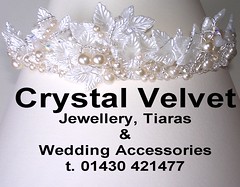 I am actually a qulaified interior designer and one of my specialisms is the use of colour. Colour can seem quite a daunting thing to use, but with just a few rules, you'll be able to use it well and confidently.
I am actually a qulaified interior designer and one of my specialisms is the use of colour. Colour can seem quite a daunting thing to use, but with just a few rules, you'll be able to use it well and confidently.
Looking at the colourwhell above, you'll be able to see the three primary colours (yellow, blue and red) They are called primary as they can not be created from other colours. All other colours come from them.
If you mix equal measures of red and yellow you get orange.
If you use more red than yellow, your orange will be reddy orange.
If you use more yellow than red the orange will be more yellowy orange or golden.
If you mix equal quantities of blue and yellow you get green.
If you use more blue than yellow your green will be teal toned
If you use more yellow than blue, the green will become more citrusy lime
If you mix equal measures of red and blue you get purple.
If you use more blue then red you get rich purple.
If you mix more red than blue you get magenta.
By adding white to any colour you get lighter pastel tones as in the wheel below the half wheel)
By adding more white you become neutral (barely any colour tone) as in the half wheel below.

Black through to grey are not colours. They are tones and are neutral.
Colour can be used in any way depending upon the look you want, but the general rule of thumb are:
Keep your colour choices with in families. Families denote the depth of colour.
 By using a mix of coloura all on the outer ring, the tonal quality contains the same amount of white. The colours are all pastel and sit well together. (see the picture below from the Celtic Women christmas album. All the girls are wearing different pastel solours and that's what ties them together.)
By using a mix of coloura all on the outer ring, the tonal quality contains the same amount of white. The colours are all pastel and sit well together. (see the picture below from the Celtic Women christmas album. All the girls are wearing different pastel solours and that's what ties them together.)

If you take the inner circle, then the colours are all deep and jewell like. Again they all sit nicely together. (the photo below is of the Celtic Women Journey Concert they are all wearing deep jewell tones)

You can also take colour from section of the wheel and they'll sit beautifully together. my personal favourite is to slice blue, purple and green together. (again the celtic women offer a look at this option because the palate is limited, they can combine depths and tones)

Muted colours are also a family: muted colours are a little harder to understand, A good word to describe it is dusky. The colours are dulled down by adding the contasting colour (ie the colour that lies between opposite it on the colour wheel. To mute green you add red. Dusky tones sit well together they have a gentleness and antique look and cannot be described as pastel as the white content is not as great.
 The final family is the complimenty colours: This is quite a brave colour scheming decision and will often work well for caribean and boliwood styled weddings. The idea is to think of the three primary colours. Add two together and then us the third as the contrast so
The final family is the complimenty colours: This is quite a brave colour scheming decision and will often work well for caribean and boliwood styled weddings. The idea is to think of the three primary colours. Add two together and then us the third as the contrast soRed + blue = purple with yellow
blue + yellow = green with red
red + yellow = orange with blue

more colour advice to follow soon








Thank you for this blog which was very helpful for someone like me!
ReplyDeleteMyra